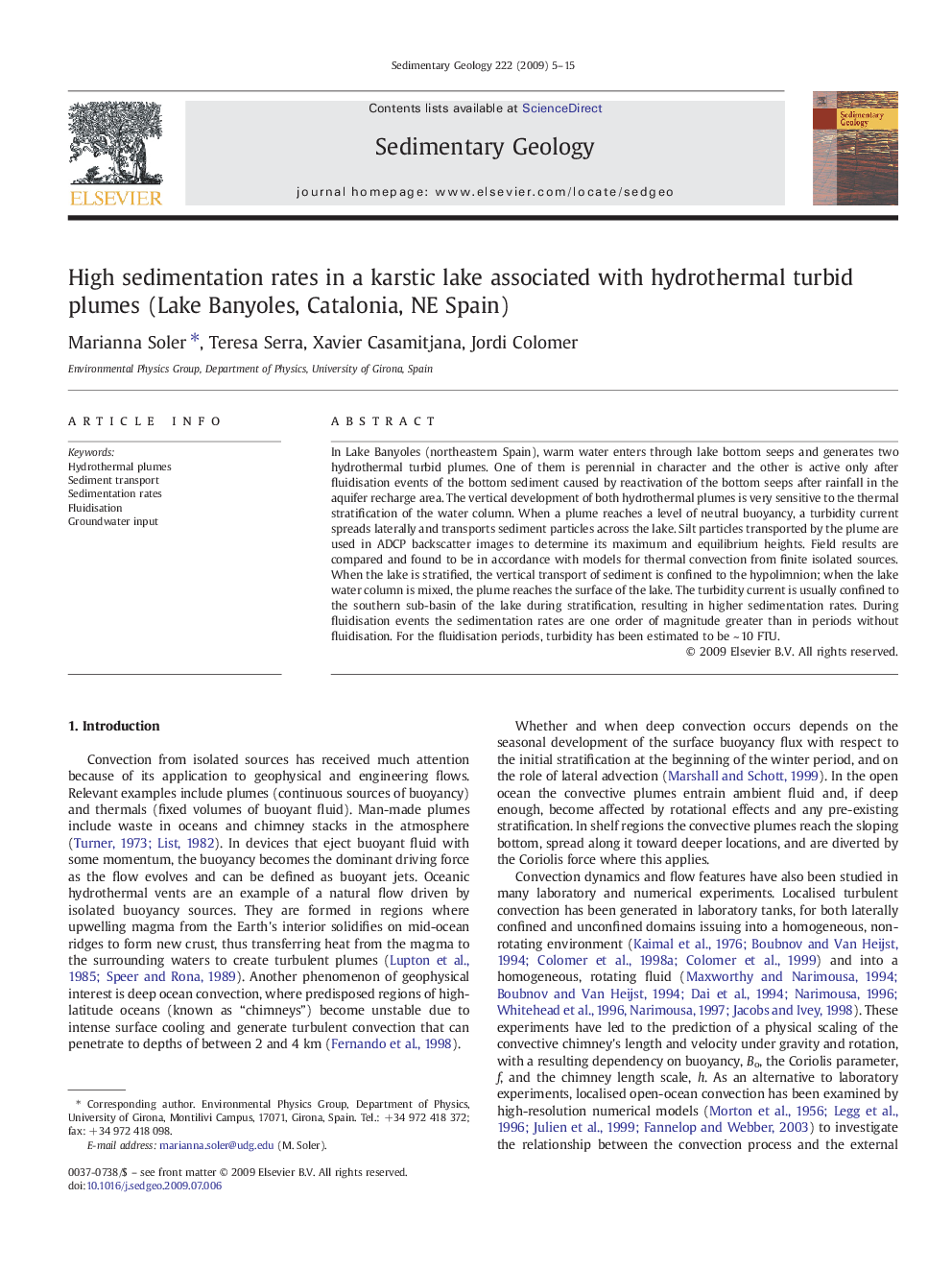| Article ID | Journal | Published Year | Pages | File Type |
|---|---|---|---|---|
| 4690372 | Sedimentary Geology | 2009 | 11 Pages |
In Lake Banyoles (northeastern Spain), warm water enters through lake bottom seeps and generates two hydrothermal turbid plumes. One of them is perennial in character and the other is active only after fluidisation events of the bottom sediment caused by reactivation of the bottom seeps after rainfall in the aquifer recharge area. The vertical development of both hydrothermal plumes is very sensitive to the thermal stratification of the water column. When a plume reaches a level of neutral buoyancy, a turbidity current spreads laterally and transports sediment particles across the lake. Silt particles transported by the plume are used in ADCP backscatter images to determine its maximum and equilibrium heights. Field results are compared and found to be in accordance with models for thermal convection from finite isolated sources. When the lake is stratified, the vertical transport of sediment is confined to the hypolimnion; when the lake water column is mixed, the plume reaches the surface of the lake. The turbidity current is usually confined to the southern sub-basin of the lake during stratification, resulting in higher sedimentation rates. During fluidisation events the sedimentation rates are one order of magnitude greater than in periods without fluidisation. For the fluidisation periods, turbidity has been estimated to be ~ 10 FTU.
